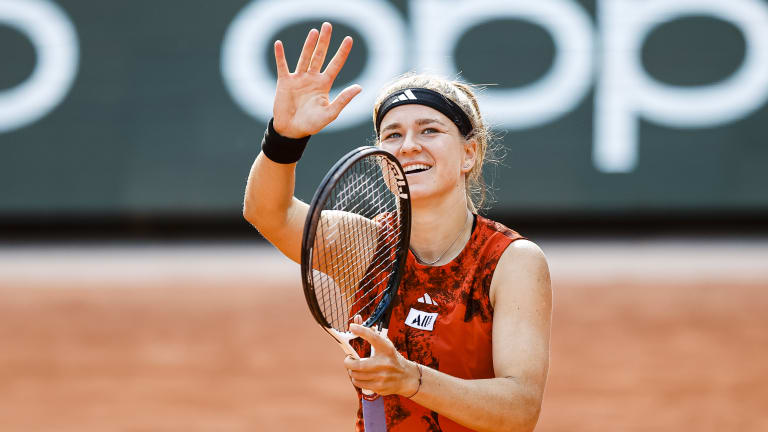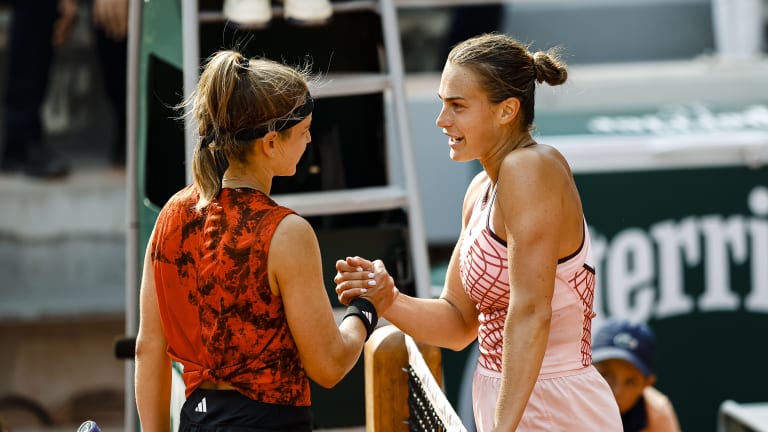The Top 10 Matches of 2023
No. 3 Match of '23: Karolina Muchova's survival skills in Paris prove too much for Sabalenka
By Dec 12, 2023The Top 10 Matches of 2023
No. 1 Match of '23: Carlos Alcaraz rapidly 'grows up' in conquering Djokovic for Wimbledon title
By Dec 14, 2023The Top 10 Matches of 2023
No. 2 Match of '23: Novak Djokovic eclipses Alcaraz in most brutal circus act imaginable
By Dec 13, 2023The Top 10 Matches of 2023
No. 4 Match of '23: Elina Svitolina gives "everything" to edge Azarenka at Wimbledon
By Dec 11, 2023The Top 10 Matches of 2023
No. 5 Match of '23: Iga Swiatek wins third Roland Garros title the hard way over Muchova
By Dec 10, 2023The Top 10 Matches of 2023
No. 6 Match of '23: Andrey Rublev steals the show from Bublik to win Wimbledon spectacle
By Dec 09, 2023The Top 10 Matches of 2023
No. 7 Match of '23: Chris Eubanks extends Wimbledon Cinderella run by ousting Tsitsipas
By Dec 08, 2023The Top 10 Matches of 2023
No. 8 Match of '23: "Destroyed" Elena Rybakina outlasts Kasatkina in Montreal marathon
By Dec 07, 2023The Top 10 Matches of 2023
No. 9 of '23: Aryna Sabalenka "somehow magically" wins US Open semifinal over Keys
By Dec 06, 2023The Top 10 Matches of 2023
No. 10 of '23: At 4:15AM, Andy Murray finishes off Kokkinakis in heroic Australian Open recovery
By Dec 05, 2023No. 3 Match of '23: Karolina Muchova's survival skills in Paris prove too much for Sabalenka
Their Roland Garros semi—won by the Czech 7-6 (5), 6-7 (5), 7-5—will be remembered by the frantic brilliance of its shotmaking and edge-of-your-seat theatre.
Published Dec 12, 2023
Advertising
Advertising

Muchova was the latest in a line of Czech women to reach her maiden major final at Roland Garros.
© Getty Images
Advertising

One key stat to remember: Muchova converted all five of her break point chances while Sabalenka went four for 13.
© Getty Images